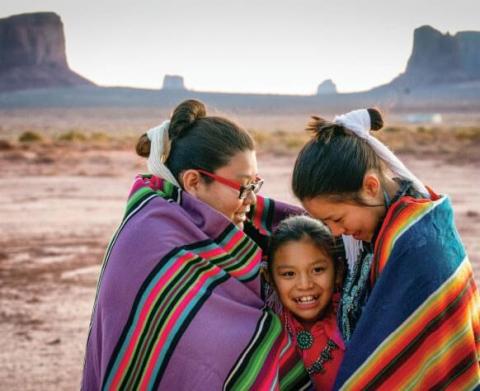
Glossary
Class
Relative social status based on income, wealth, race, power, position, occupation, and education.
Diversity
Each individual is unique, and groups of individuals reflect multiple dimensions of difference including race, ethnicity, gender, class, sexual orientation, age, physical abilities, religious beliefs, political beliefs, and cognitive styles.
Dominant Culture
This refers to the established language, religion, values, rituals, and social customs on which society was built. It has the most power and is widespread and influential within a social entity such as an organization, in which multiple cultures are present. The leadership, management standards, and preferences of those at the top of an organization’s hierarchy heavily influence the dominant culture. In this framework, dominant culture refers specifically to the American context in which organizational culture is predominantly defined by white men and white women in positional power.
Equity Vs. Equality
In the context of societal systems, equality, and equity refer to similar but slightly different concepts. Equality generally refers to equal opportunity and the same levels of support for all segments of society. Equity goes a step further and refers to offering varying levels of support depending upon the need to achieve greater fairness of outcomes.
Equity-mindedness
A willingness and ability to:
- Call attention to patterns of inequitable outcomes.
- Take personal and institutional responsibility for the success of program participants (e.g., members, students, constituents)
- Critically reassess practices and demonstrate race-consciousness
- Understand the social and historical context of exclusionary practices in their field/ area of work
Ethnicity
Identifies groups that share a common identity-based ancestry, language, or culture. It is often based on religion, beliefs, customs, memories of migration or colonization, and current shared experiences.
Inclusion
Authentically bringing traditionally excluded individuals and/or groups into processes, activities, and decision/policy-making in a way that shares power.
Institutional Oppression
The idea that one group is better than another group and has the right to control the other gets embedded in the institutions of the society - the laws, the legal system and police practice, the education system and schools, hiring policies, public policies, housing development, media images, political power, etc. When a woman makes two-thirds of what a man makes in the same job, it is institutionalized sexism. When one out of every four African American young men is currently in jail, on parole, or probation, it is institutionalized racism. When psychiatric institutions and associations “diagnose” transgender people as having a mental disorder, it is institutionalized gender oppression and transphobia. Institutional oppression does not have to be intentional. For example, if a policy unintentionally reinforces and creates new inequalities between privileged and non-privileged groups, it is considered institutional oppression. Race-based disadvantages, discrimination, and exploitation are based on skin color.
Interpersonal Oppression
The idea that one group is better than another and has the right to control the other, which gets structured into institutions, gives permission and reinforcement for individual members of the dominant group to personally disrespect or mistreat individuals in the oppressed group. Interpersonal racism is what white people do to people of color up close-the racist jokes, the stereotypes, the beatings and harassment, the threats, etc. Similarly, interpersonal sexism is what men do to women, the sexual abuse and harassment, the violence directed at women, the belittling or ignoring of women’s thinking, the sexist jokes, etc. Most people in the dominant group are not consciously oppressive. They have internalized the negative messages about other groups and consider their attitudes towards the other group quite normal.
Intersectionality
An analysis of the connections between systems of oppression (e.g., racism and classism, racism and sexism) and how individuals experience those intersecting or compounding systems of oppression or privilege.
Microaggressions
Brief and commonplace verbal, behavioral, or environmental indignities, whether intentional or unintentional, that communicate hostile, derogatory, or negative racial slights and insults toward African Americans, Indigenous, and other people of color.
Race
A socially constructed way of grouping people based on skin color and other apparent physical differences, which has no genetic or scientific basis. The ideology of race has become embedded in our identities, institutions, and culture and is used as a basis for discrimination and domination.
Racial Justice
The systemic, fair treatment of people of all races resulting in equitable opportunities and outcomes for everyone. All people can achieve their full potential in life, regardless of race, ethnicity, or the community in which they live. A racial justice framework can move us from a reactive posture to a more powerful, proactive, and even preventative approach.
Racial Privilege
Race-based advantages and preferential treatment based on skin color (often experienced without any conscious effort or awareness).
Types Of Racism
- Internalized Racism
- A set of privately held beliefs, prejudices, and ideas about the superiority of whites and the inferiority of people of color. Among people of color, it manifests as internalized oppression. Among whites, it manifests as internalized racial superiority.
- Interpersonal Racism
- The expression of racism between individuals. It occurs when individuals interact, and their private beliefs affect their interactions.
- Institutional Racism
- Discriminatory treatment, unfair policies and practices, inequitable opportunities, and impacts within organizations and institutions, all based on race, that routinely produce racially inequitable outcomes for people of color and advantages for white people. Individuals within institutions take on the power of the institution when they reinforce racial inequities.
- Structural Racism
- A system in which public policies, institutional practices, cultural representations, and other norms work in various, often reinforcing ways to perpetuate racial group inequality. It is the presence of racial bias among institutions and across society. It involves the cumulative and compounding effects of societal factors including the history, culture, ideology, and interactions of institutions and policies that systematically privilege white people and disadvantage people of color.
- Anti-african American Racism
- Describes how racism specifically targets and places African American people at the bottom of the racial hierarchy. While racism affects people of color from all backgrounds, it has a particular impact on African American people. It’s important to understand these nuances to avoid reinforcing the racial hierarchy in efforts to combat racism and build solidarity among different people of color groups.
Power
The ability to define or change situations. Power can manifest as personal or collective self-determination. Power is the ability to influence others to believe or adopt similar values that those in power desire.
Stereotype
A standardized mental picture that is held in common about members of a group that represents an oversimplified opinion, attitude, or unexamined judgment, without regard to individual differences.
Unconscious Bias/implicit Association
The attitudes or stereotypes that affect our understanding, actions, and decisions unconsciously. They are activated involuntarily, without conscious awareness or intentional control. They can be either positive or negative, and everyone is susceptible.
White Supremacy
The existence of racial power that denotes a system of structural or societal racism that privileges white people over others, regardless of the presence or absence of racial hatred. White racial advantages occur at both the collective and individual levels. Both people of color and white people can perpetuate white-dominant culture, resulting in the overall disenfranchisement of African Americans, Indigenous, and other people of color in many aspects of society.
White Supremacy Culture
The existence of racial power that denotes a system of structural or societal racism that privileges white people over others, regardless of the presence or absence of racial hatred. White racial advantages occur at both the collective and individual levels. Both people of color and white people can perpetuate white-dominant culture, resulting in the overall disenfranchisement of African Americans, Indigenous, and other people of color in many aspects of society.







